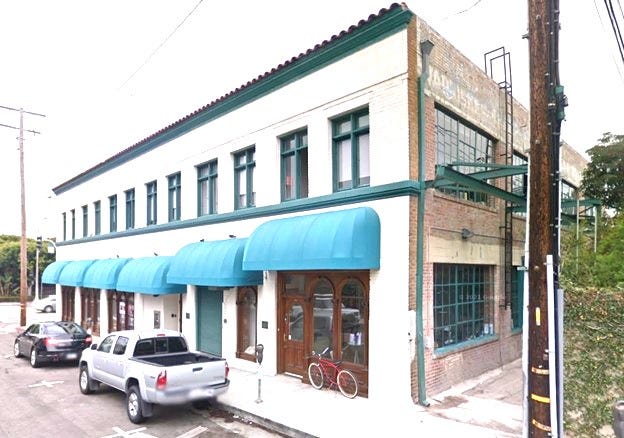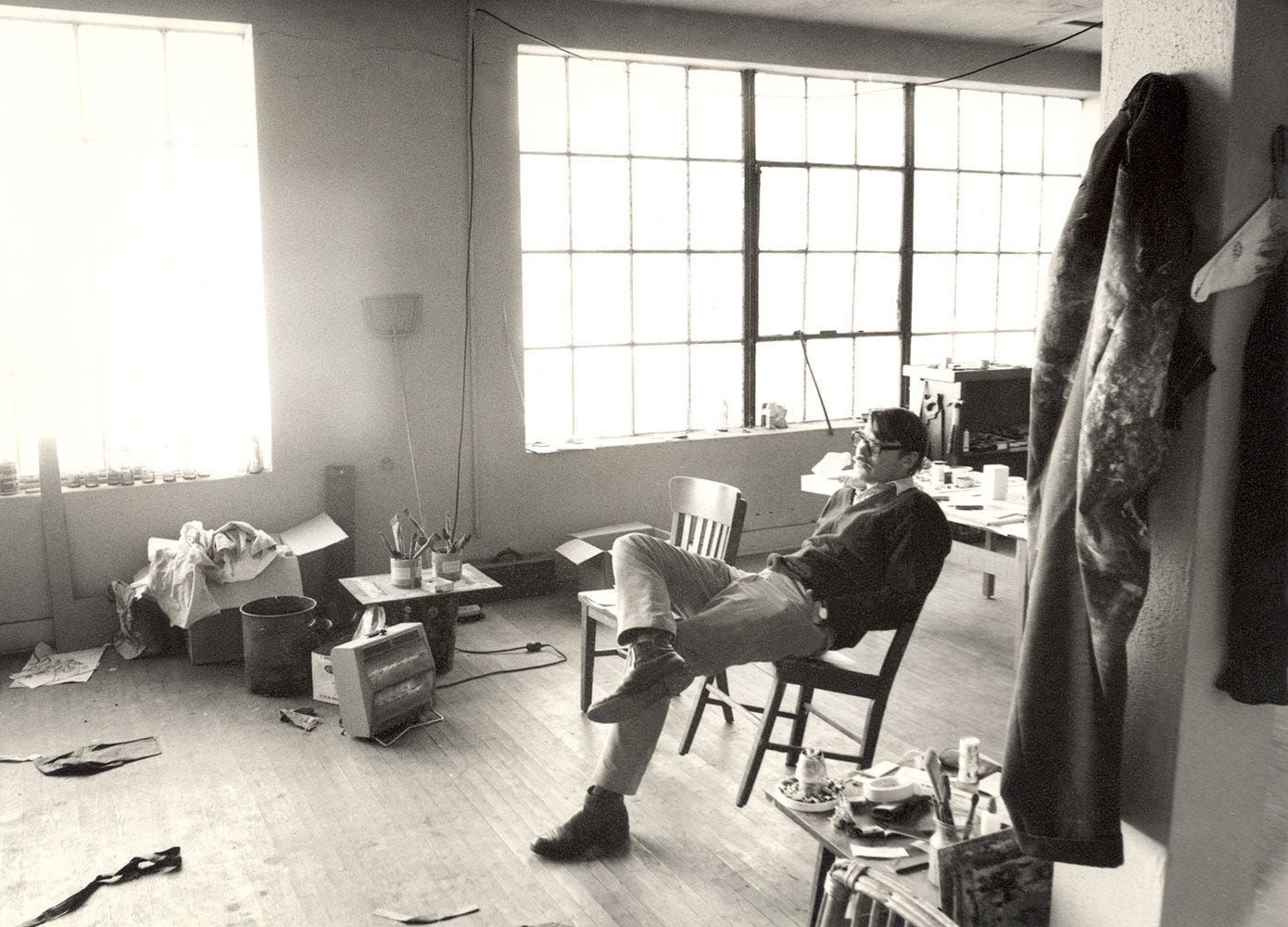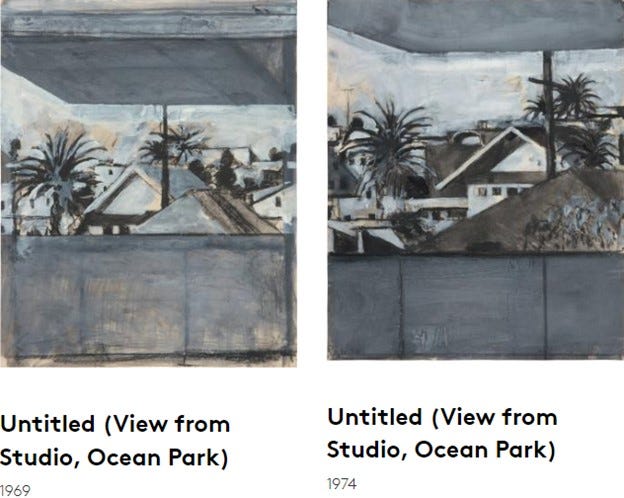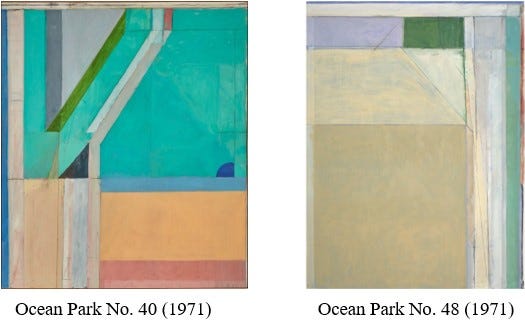From 1966 to 1975 San Francisco Bay area artist and UCLA professor Richard Diebenkorn (1922 - 1993) has a studio in the 1924 Fuller Paint Company building at Main and Ashland, where in 1967, he begins his Ocean Park series.
The 2nd floor of the 2821 Main St. building consists of two large spaces ( (i) front - windows facing west over Main St; and (ii) back - windows facing east up the hill to 4th St) and a small room in the center of the building. When he arrives in 1966, Diebenkorn (age 44) uses the small windowless room in the center as a temporary studio. In 1967, he moves into Sam Francis' vacated studio at the back.1
Many of the first paintings Diebenkorn makes in his new studio are representational - notably a few landscapes and views from windows, such as the rooftop scene depicted twice, in 1969 and 1974. 2
The view through the studio window also plays some role in the abstract Ocean Park series paintings. Diebenkorn's back studio looks out and up at the hillside, the streets crossing one another, the power lines, and often - the marine layer fog.
Ocean Park No. 1 is painted in 1967, shortly after the Diebenkorn sets up in the back studio.
Diebenkorn deems the next four paintings (Nos. 2 - 5) to be failures and they are destroyed. The next eight successful works date from 1968; then six from 1969 and ten in 1970, bringing the series up to No. 36. Ten more reaches No. 48 in 1971.
In 1972, Sam Francis moves out and Diebenkorn moves into the large front space.
The pace then slows to an average of five to six Ocean Park series paintings per year. The last in the series painted at the Ashland studio is Ocean Park No. 91.
In the 1970s, Al Ehringer, Bob Scura, and John P. Wilson are buying up dilapidated buildings along Main Street, fixing them up and luring restaurants and shops to fill the space. Diebenkorn sees the writing on the wall - and the opportunities. In 1974, he buys a vacant 50 ft wide lot on Main Street opposite Edgemar. In 1976, Diebenkorn moves from the Ashland building to his new studio at 2448 Main Street.
Painters of the same generation, both trained in the San Francisco Bay area, Francis (in front) and Diebenkorn (in back) overlap in the 2821 Main St building for 5 years - but rarely interact. Although friendly and undoubtedly acutely aware of each others work, Diebenkorn and Francis are never close.
Diebenkorn, working outside of the prevailing style of Abstract Expressionism, and embracing portraiture, landscape, and still life - outrages the New York critics who take to calling him the leader of the “Bay Area figurative school.”











